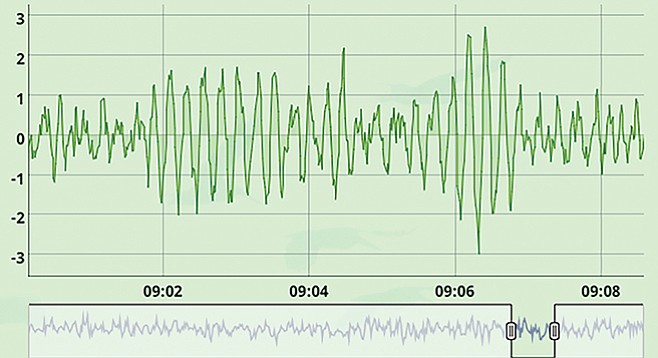 Facebook
Facebook
 X
X
 Instagram
Instagram
 TikTok
TikTok
 Youtube
Youtube

It’s another day of El Niño surf: the waves are 10 feet at 20 seconds, occasionally larger.
I like solid surf but I’m not a big-wave surfer. This is kind of pushing it. I’m in Baja watching set waves close out a popular reef break every 15 minutes or so. As the buoy shows, a single 15-footer washes through, creating swirling currents that take me directly toward the rocks and steep cliffs as I try to paddle through the shorebreak. After two attempts, I know it isn’t worth the effort. If I ever did make it out, there’s too much water moving and I am sure to get smacked by the bombs breaking outside the perfectly peeling rights on the reef.
The wave period is especially important because a long-period ocean swell, at 20 seconds, grows and breaks as much higher surf than a shorter 10-second wave. Online surf forecasts are pretty good at relaying this information about a week in advance. I check the surf forecast at least once a day. But when it comes to going out and finding the best waves, the buoy report has the last word on where to score waves.
For the most in-depth buoy reports, I use swellmatrix.com on my phone. It breaks down the swell hitting the buoy, telling me the exact height and period of all the individual swells in the ocean. Then I zoom in on every wave the buoy records, seeing how many waves are in a set and how often the sets hit.
I end up checking a couple other reefs before finding the perfect setup. A touch smaller than the other reef and no one is out. The amount of energy in the water is incredible and it’s lighting up all kinds of spots that are normally slow longboard waves. I carve up half a dozen 100-yard, overhead walls, performing only for myself. The surf forecast got me to the beach, but the buoys got me the waves.


It’s another day of El Niño surf: the waves are 10 feet at 20 seconds, occasionally larger.
I like solid surf but I’m not a big-wave surfer. This is kind of pushing it. I’m in Baja watching set waves close out a popular reef break every 15 minutes or so. As the buoy shows, a single 15-footer washes through, creating swirling currents that take me directly toward the rocks and steep cliffs as I try to paddle through the shorebreak. After two attempts, I know it isn’t worth the effort. If I ever did make it out, there’s too much water moving and I am sure to get smacked by the bombs breaking outside the perfectly peeling rights on the reef.
The wave period is especially important because a long-period ocean swell, at 20 seconds, grows and breaks as much higher surf than a shorter 10-second wave. Online surf forecasts are pretty good at relaying this information about a week in advance. I check the surf forecast at least once a day. But when it comes to going out and finding the best waves, the buoy report has the last word on where to score waves.
For the most in-depth buoy reports, I use swellmatrix.com on my phone. It breaks down the swell hitting the buoy, telling me the exact height and period of all the individual swells in the ocean. Then I zoom in on every wave the buoy records, seeing how many waves are in a set and how often the sets hit.
I end up checking a couple other reefs before finding the perfect setup. A touch smaller than the other reef and no one is out. The amount of energy in the water is incredible and it’s lighting up all kinds of spots that are normally slow longboard waves. I carve up half a dozen 100-yard, overhead walls, performing only for myself. The surf forecast got me to the beach, but the buoys got me the waves.
Comments